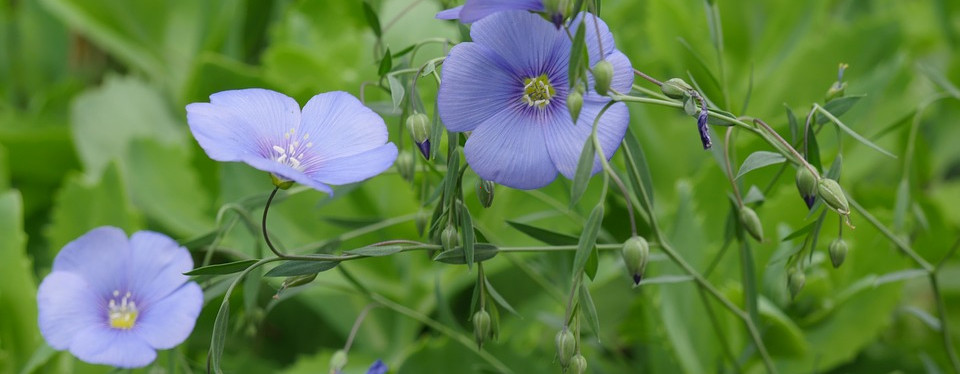Linen / Flax
Flax plants are pulled from the ground rather than cut, in order to obtain the full length of the fibers, and to prevent fiber discoloration. At one time, this work was done all by hand. Today pulling machines are used. The equipment is often owned by cooperatives and loaned to each farmer.
The plants are first de-seeded. Next comes retting; separating the straw or bark from the fiber. There are two main methods of retting; dew and water. Dew retting, the process mostly used in Western Europe, is done by spreading the flax in the field. The actions of dew, rain and sun, along with soil-borne bacteria, help to loosen and dissolve the outer bark. After retting, the farmers roll and store the flax .
Flax also can be water-retted. This process involves submerging the flax in water for between six and 20 days, allowing bacterial action to cause the bark to be loosened. Today, many farmers consider this process too expensive. Egypt is one country where flax is water-retted; in the Nile River.
Scutching is the next step to be done. This process extracts the flax fibers from the retted straw. Special machines move the flax on long tables to remove impurities. Other equipment is used to further thresh the flax and extract the fibers. During the scutching process the flax is divided into fine fibers called line, shorter fibers are called tow and shives. Shives are the woody part of the plant. Line is further processed by hackling to form sliver. Line sliver is weighed, manually sorted and packed in bales or rollers weighing 100 kilograms. Line can be wet- or dry-spun.
Tow can be dry-spun on the cotton system or spun on the worsted system. It is also used for non-wovens, including paper, and for technical products such as insulation. Shives are packed and shipped for a variety of industrial products.
The linen fibres are mixed with cotton, wool, silk, viscose, and polyester and this mixed thread allows one to obtain many types of cloth. The combination of two fibres allows one to obtain a different "hand", i.e. a consistency and aspect different from those obtained with simple threads.


